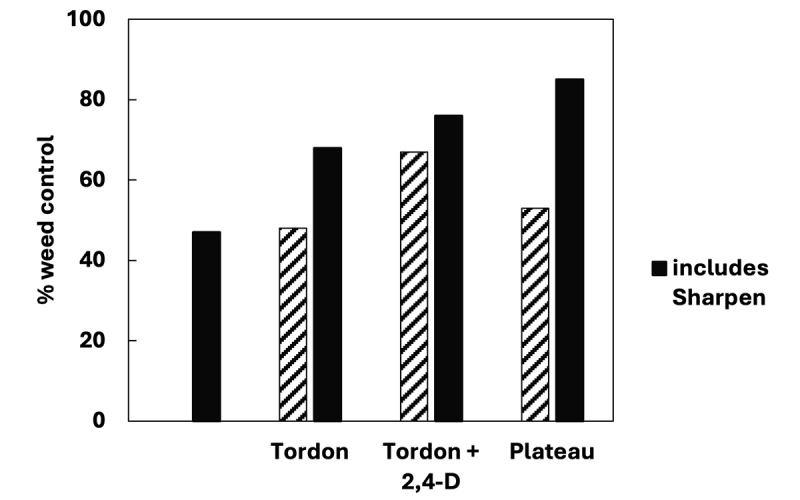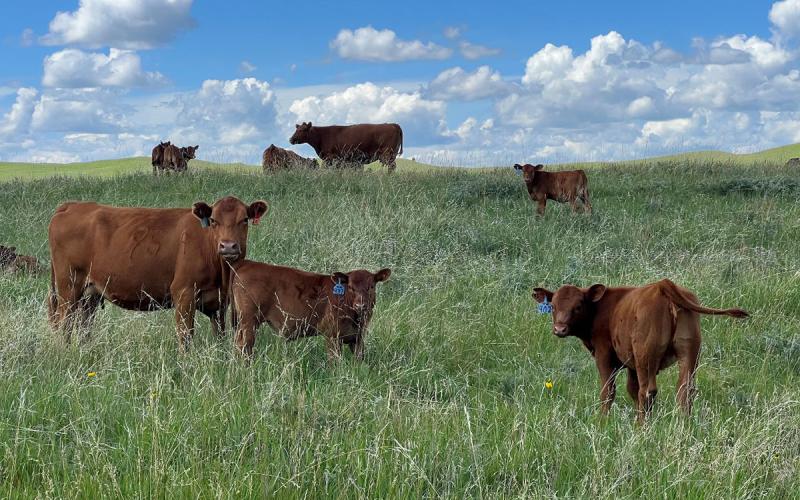In June, leafy spurge, one of our most problematic rangeland, pasture, and roadside weeds, displays its yellow bracts. This is also one of South Dakota’s noxious weeds that landowners are required by law to control. Leafy spurge spreads through underground rhizomes and by seeds that are often viable by mid-July. Short-term control of leafy spurge is often achieved with a combination of 2,4-D and picloram (Tordon®), both synthetic auxins (group 4 herbicides). As we’ve learned over the years, repeated use of herbicides that target the same site of action can cause the weed to become resistant to those herbicides. Even though there’s been no reports of group 4 herbicide resistance to leafy spurge, we should still consider incorporating other herbicide modes of action into our leafy spurge management strategies. Two underutilized modes of action include imazapic (Plateau®), which belongs to the ALS inhibitors (group 2) and saflufenacil (Sharpen®, Detail®), which belongs to the PPO inhibitors (group 14). Saflufenacil kills above-ground foliage on contact but has little to no impact on the roots. Since killing the roots is essential for controlling perennial weeds, saflufenacil should be mixed with systemic herbicides, such as Plateau®, Tordon®, and/or 2,4-D that are translocated throughout the plant.
Research from Nebraska (Datta et al., 2013) has shown that when Plateau® is tank-mixed with and applied during flowering, it can provide three years of control from a single application, as opposed to only two years of control from a fall application of Plateau®. SDSU research has also shown that adding saflufenacil to herbicide tank mixes can increase the performance of both Tordon® and Plateau® at one year after application (Figure 1).

However, when Tordon® was tank-mixed with 2,4-D ester, there was no benefit to the saflufenacil addition. If herbicides have already been purchased, it’s best to apply them soon, if they haven’t already been applied. If they haven’t been purchased, consider diversifying herbicide modes of action by applying Plateau® + saflufenacil.
As a downside, Plateau® applications made after green-up can suppress growth of desirable grasses, especially the cool-season species of smooth brome and Kentucky bluegrass. For this reason, it’s often applied by transportation departments to reduce mowing costs in right-of-ways. The Nebraska study reported a 30% reduction in cool season grass production for up to six weeks after application after a 9 fl oz/acre Plateau® application. To reduce the chances for temporary grass production decline, apply Plateau® at 6 fl oz/acre instead. Refer to the label to determine whether the grass species present on your land may be susceptible to growth suppression.
Since leafy spurge may exhibit regrowth from underground rhizomes, continue to monitor regrowth and expect to make more than one application to fully-control this weed. Since weeds can quickly become resistant to ALS inhibitors, do not repeatedly apply Plateau®. Mowing, hand weeding, and releasing Leafy Spurge beetles can have utility as well.

